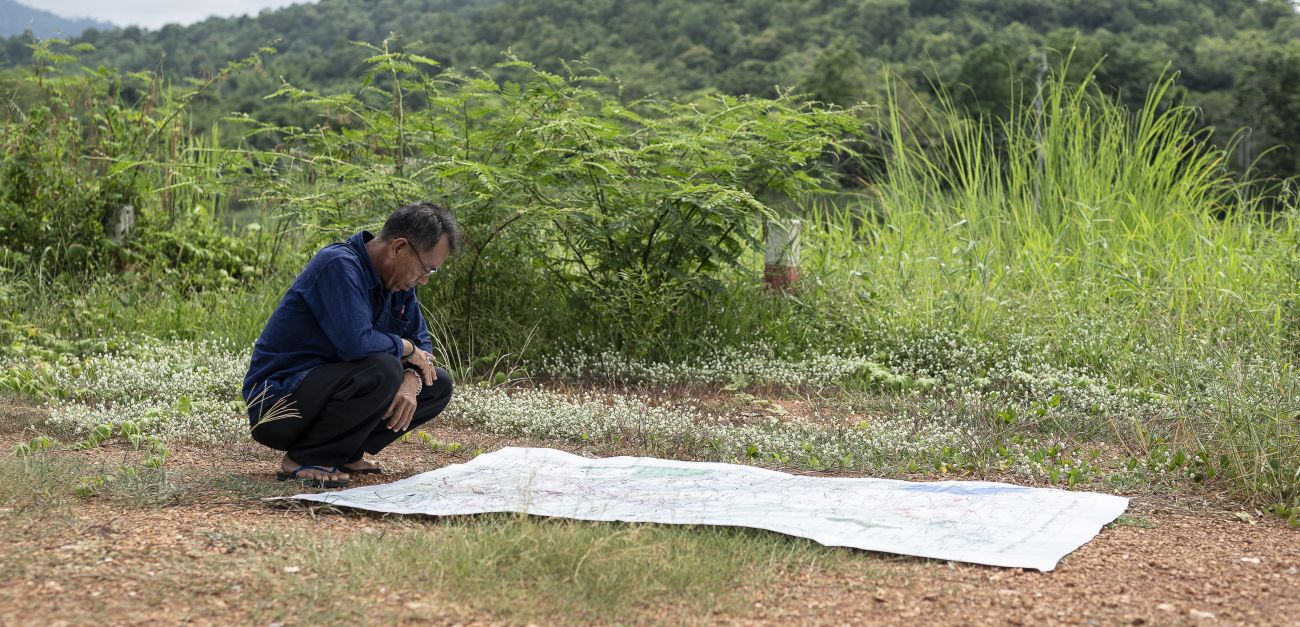

As FLR is highly contextual, there is no fixed approach. In general, an FLR program cycles through five stages. For each stage we have highlighted some things for practitioners to consider.
Figure 2. Five stages of FLR programs
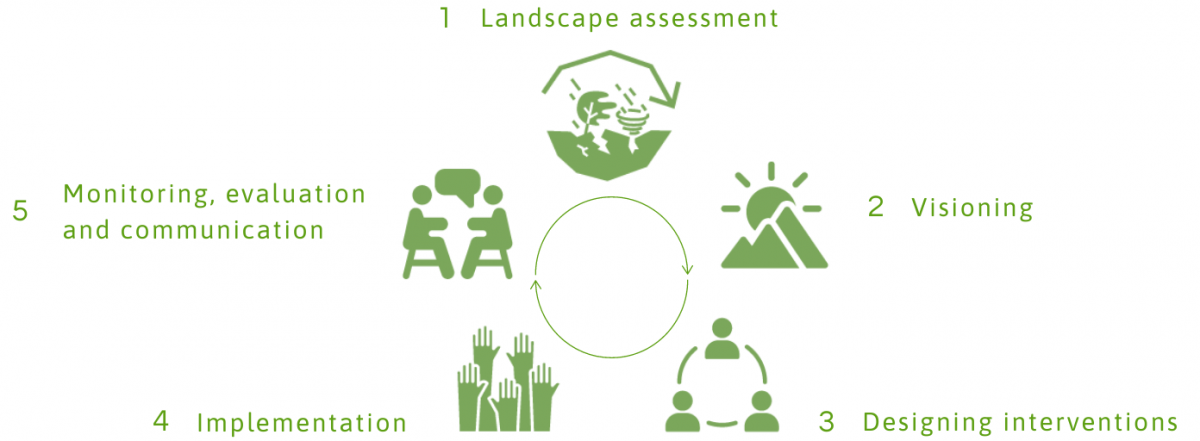
Stage 1: Landscape assessment
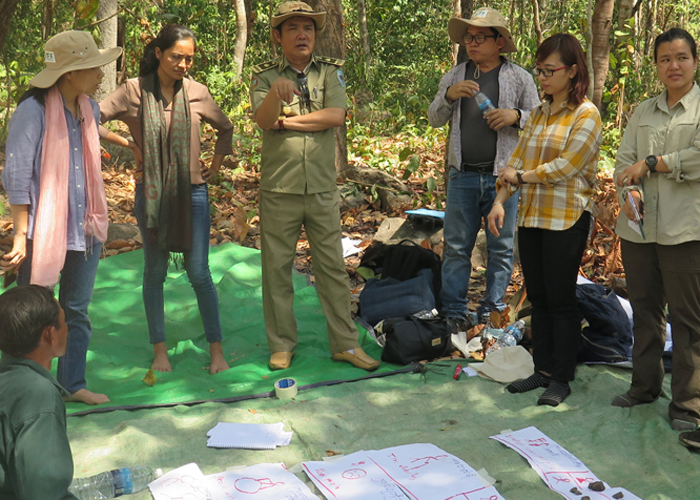
- Ensure supportive legal and policy frameworks are in place, for example, for forest restoration and stakeholder engagement
- Map local resources, especially in areas that are degraded or where there is conflict over resources: this includes natural resources such as forest, land and water; landscape products and services; available techniques and technologies; infrastructure; and financial resources
- Identify and map stakeholders and their needs and interests
- Identify key inequality issues and their root causes, such as a gender analysis
Stage 2: Visioning
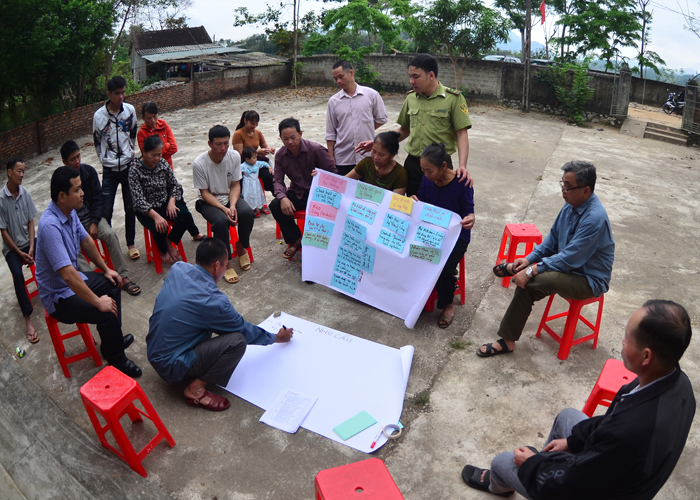
- Obtain the free, prior and informed consent of stakeholders to participate in FLR
- Establish a platform where multiple stakeholders, especially vulnerable groups like women and people with low incomes, can represent themselves fairly in discussions and negotiations
- Using the landscape assessment results, identify the underlying causes of landscape degradation and restoration potential
- Discuss and agree on ecological and socio-economic goals of FLR in the landscape
Stage 3: Designing interventions
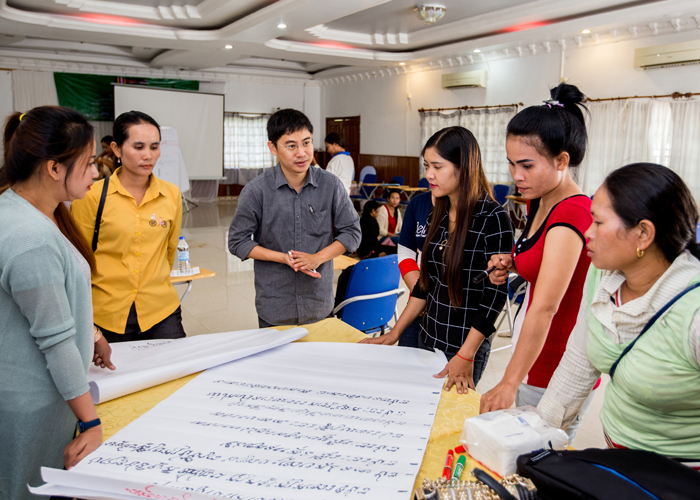
- Discuss different restoration pathways and interventions for different kinds of current land use; see IUCN and WRI 2014
- Develop a fair cost and benefit-sharing mechanism
- Design a monitoring, evaluation and communication system
- Discuss roles and responsibilities of each stakeholder
- Establish grievance and redress mechanism
Stage 4: Implementation

- Jointly develop a detailed plan that includes interventions, costs, timing and responsibilities
- Mobilize and allocate resources according to the plan
Stage 5: Monitoring, evaluation and communication
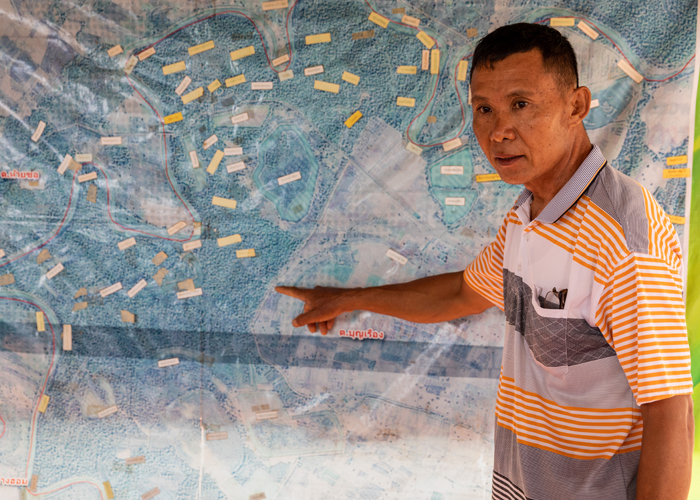
- Monitor and evaluate progress in a participatory way
- Learn from experiences and make necessary adjustments as part of an adaptive management process
- Communicate results and lessons with other interested groups
More guidance
To learn more about developing and implementing FLR, see Forest Landscape Restoration for Asia-Pacific Forests. This report describes the history, major policies and programs of forest restoration in Indonesia, Myanmar, the Philippines, Thailand and Viet Nam. It analyzes different technical approaches and provides an economic assessment of different restoration strategies. It also highlights the conditions for success and makes recommendations that practitioners could learn from.
One important lesson from Lao PDR, Thailand and Viet Nam is that the livelihoods of the neediest groups should be improved when persuading them to invest in forest protection. Identifying benefits that can be generated quickly can help sustain the commitment of these stakeholders.
Another useful report is Decision Support Tools for Forest Landscape Restoration. It identifies the following principles for FLR processes.
- Focus on landscapes: Implement interventions within a broad context of interacting land uses and land holdings, including managed and unmanaged ecosystems.
- Engage stakeholders and support participatory governance: Actively engage stakeholders, particularly vulnerable groups, in planning and decision-making.
- Restore ecological functions: This can be achieved by improving habitats for wild species; enhancing productive land uses; preventing erosion and flooding; increasing resilience to climate change and other disturbances; and integrating forest functions into land-use management plans to promote conservation and sustainable use of forests.
- Use a variety of restoration approaches: Combine suitable technical strategies, such as natural regeneration, agroforestry and different types of tree plantings.
- Conserve and enhance natural ecosystems: Stop deforestation and degradation of natural forests and associated ecosystems and enhance the recovery and conservation of forest remnants in the landscape.
- Tailor to local context: Adapt approaches to local social, cultural, economic and ecological values and needs.
- Restore the provision of diverse ecosystem goods and services that benefit multiple stakeholder groups: These goods and services include improved soil fertility; reduced erosion; shade; timber and non-timber forest products; carbon storage; and increased downstream water supply and quality.
- Adjust restoration approaches over time as environmental conditions, knowledge, capacity, stakeholder needs and societal values change: Integrate information and knowledge from monitoring activities, research and stakeholder guidance into plans and decisions as restoration progresses.
